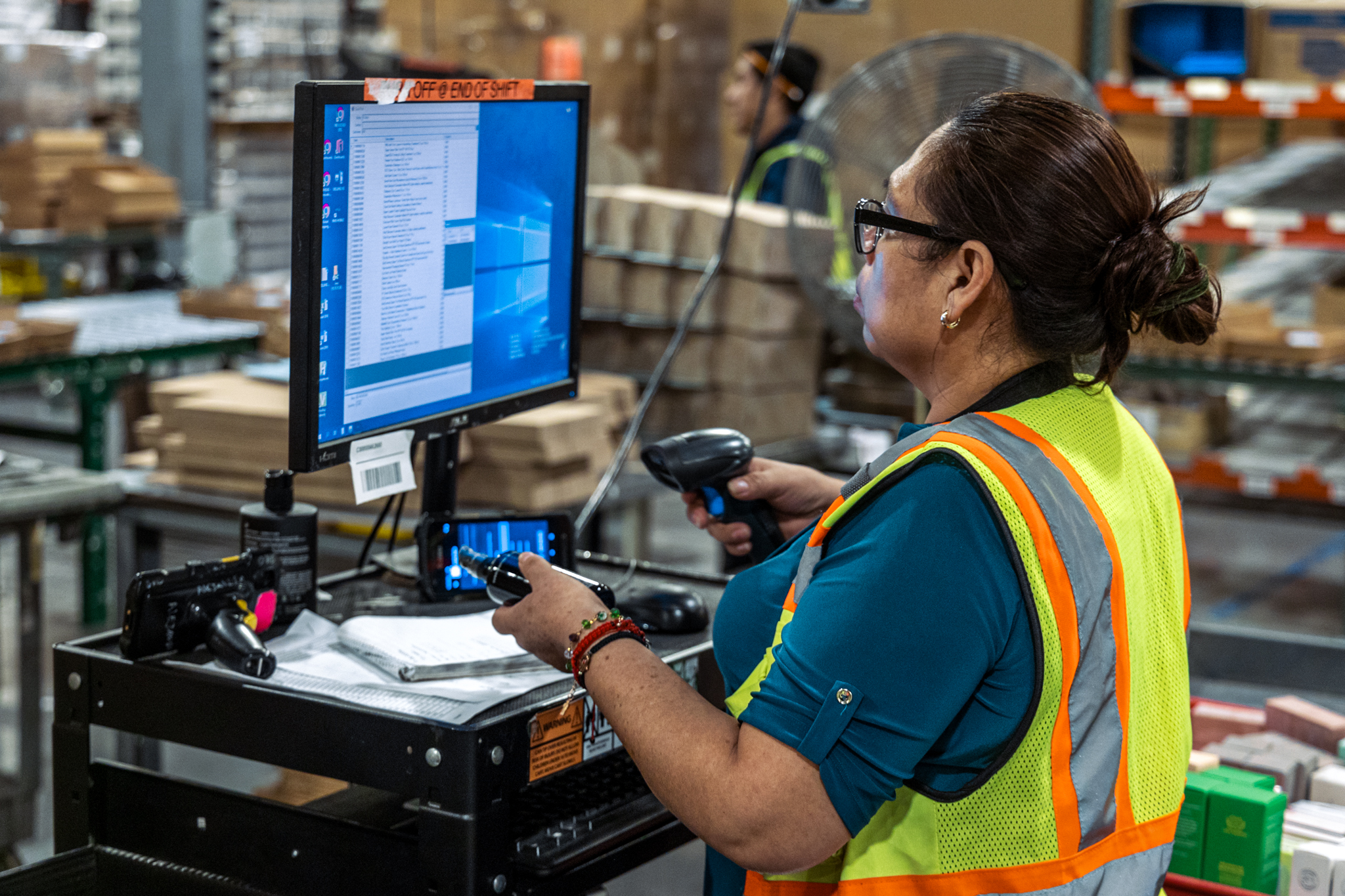No other industry moves like apparel—and nothing exposes fulfillment cracks faster.
You’re dealing with constant SKU changeouts, high return rates, unpredictable demand, and a customer base that expects speed without sacrificing presentation. When your operation starts missing on accuracy or timing, it’s not just a logistics problem—it’s a brand problem.
In this article, we’ll break down the best practices for apparel fulfillment so you can reduce costly errors, protect your brand’s presentation, and create an operational edge that drives customer retention and revenue.
Is Your Fulfillment Operation Built for Apparel Complexity?
What makes apparel fulfillment especially challenging isn’t volume—it’s variation. Styles, colors, sizes, seasons, and channels all compete for space, accuracy, and speed. If your operation isn’t built to flex with those variables, you will run into issues.
Here’s where complexity starts to work against you:
- High SKU density: Multiple sizes, colors, and seasonal variants create fulfillment blind spots.
- Elevated return rates: Fit issues and style preferences lead to more returns than most industries.
- Multichannel coordination: Selling through DTC, marketplaces, and retail adds pressure to get inventory and SLA alignment right.
- Brand experience expectations: Customers expect perfectly folded, well-packaged apparel—not creased or mismatched items arriving late.
If your fulfillment partner can’t execute on these details consistently, your ops team will spend more time cleaning up after shipments than planning for growth.
Best Practices for Apparel Fulfillment That Protect Your Brand & Your Bottom Line
The biggest fulfillment gaps aren’t caused by lack of effort—they’re caused by misaligned systems. Most apparel brands have the volume, demand, and brand visibility to scale—but operations must be built to handle SKU density, seasonal surges, and brand consistency at lightning speed.
These four best practices will help you close the gaps. Each one is designed to eliminate the inefficiencies that erode margin, increase returns, and weaken customer trust—so your fulfillment operation doesn’t just support growth, it drives it.
1. Optimize Inventory Allocation by Channel & Region
Keeping the wrong products in the wrong places creates unnecessary transfers, longer ship times, and missed expectations. High-performing apparel brands don’t just guess—they use real-time sales data and predictive analytics to:
- Allocate top-sellers closer to high-demand zones
- Segment inventory by channel to avoid overselling
- Reduce redundant transfers between facilities
Getting inventory placement right means fewer missed SLAs, faster delivery to priority markets, and less last-minute scrambling during seasonal spikes. It reduces cost, but more importantly, it builds operational consistency that protects speed and accuracy at scale.
2. Implement Folding, Tagging, and Packing Standards
Apparel presentation is part of the product experience. Sloppy presentation doesn’t just disappoint customers—it drives returns and undermines brand perception. The right fulfillment partner supports:
- Consistent folding and bagging procedures per SKU or category.
- Branded packaging inserts and hang tags for a premium experience.
- Damage control protocols to catch flawed items before they ship.
When these standards aren’t aligned, you introduce inconsistency across warehouses, shifts, and fulfillment centers. That leads to more customer complaints, more rework, and more pressure on your internal CX teams.
3. Use Variant-Level Scanning to Eliminate Pick Errors
With so many near-identical SKUs, even one mispick can lead to a lost customer. Accuracy at the variant level isn’t a nice-to-have—it’s essential for protecting margin and maintaining trust at scale. Best-in-class operations enforce scanning protocols that:
- Verify size, color, and style match at the pick and pack stage.
- Reduce returns due to fulfillment—not customer—errors.
- Improve confidence in accuracy as order volume increases.
Basic SKU scanning isn’t enough in apparel—you need variant-level checks to catch the difference between black and navy, S and XS, or cotton and stretch. That precision saves revenue and prevents CX churn.
4. Build a Returns Workflow That Supports Fast Resale
In apparel, returns are inevitable. But they don’t have to drain your margin. A well-structured returns process isn’t just about speed—it’s about reclaiming inventory, protecting cash flow, and preserving customer satisfaction. Smart returns handling helps:
- Inspect and restock returned items quickly for resale.
- Flag repeat returners or product issues for CX follow-up.
- Streamline returns through branded portals and pre-labeled kits.
Without a structured workflow, returned items sit idle, tying up working capital and clogging inventory systems. A fast resale-ready process turns losses into recoverable margin—and keeps your fulfillment engine running clean.
Where Most Apparel Brands Lose Efficiency—& How to Fix It
Apparel fulfillment becomes a liability when systems don’t scale. Brands that rely on manual workflows, disconnected inventory systems, or rigid 3PLs start seeing the problems—rising exceptions, delayed orders, unhappy customers, and burnt-out ops teams.
There are clear signs when your fulfillment infrastructure isn’t built to scale—and they usually show up at the worst possible time. If you’re seeing these patterns inside your operation, you’re not dealing with growing pains—you’re dealing with structural gaps.
- Manual exception handling: Time-consuming workarounds drag down your team.
- No real-time visibility: You’re flying blind on what’s in stock and where it’s going.
- Inflexible fulfillment partner: Your 3PL can’t adapt to seasonal launches or rapid SKU expansion.
Closing these gaps takes more than effort—it takes systems built to handle apparel complexity at scale. When those systems are in place, you gain the operational clarity and control needed to move fast without sacrificing accuracy or brand experience.
The most competitive apparel brands don’t win with trend cycles alone—they win because their fulfillment can support growth, protect brand presentation, and handle complexity without breaking or slowing down. This builds trust and drives loyalty.
If your fulfillment operation can’t deliver on that promise, it’s costing more than shipping fees—it’s costing repeat customers. If you’re ready to evaluate whether their current fulfillment operations are built to scale, download this Fulfillment Growth Readiness Worksheet. It will help you assess key operational areas and identify gaps that could impact your ability to grow efficiently.












